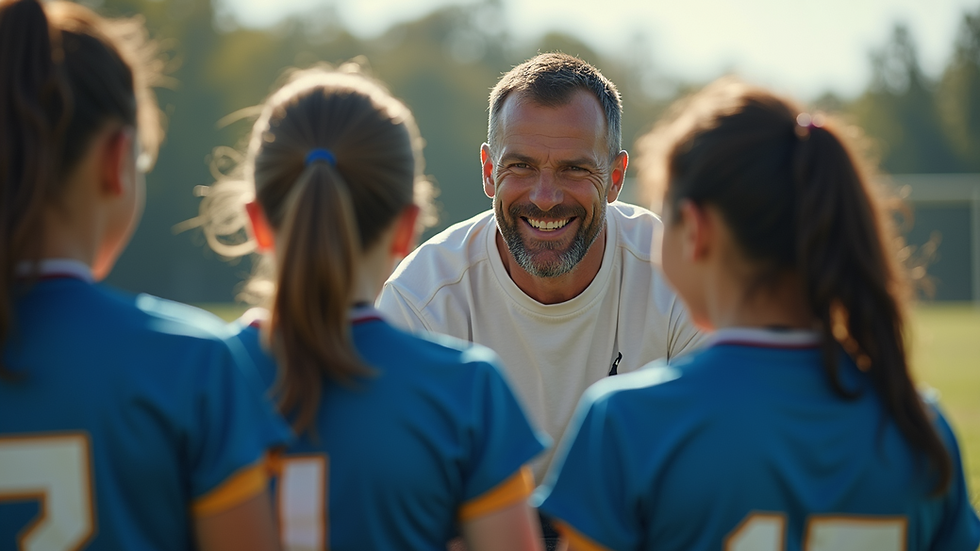Top Child Safeguarding Practices in Sports Organizations
- scottthrelfall
- Sep 9
- 4 min read
In recent years, the importance of child safeguarding in sports organizations has gained significant attention. With children participating in various sports, it is crucial to ensure their safety and well-being. Sports should be a place where children can learn, grow, and have fun, but they must also be protected from potential harm. This blog post will explore the top child safeguarding practices that sports organizations can implement to create a safe environment for young athletes.
Understanding Child Safeguarding
Child safeguarding refers to the measures taken to protect children from harm, abuse, and neglect. In the context of sports, this means creating a safe environment where children can participate without fear of exploitation or abuse.
Sports organizations have a responsibility to ensure that all children are treated with respect and dignity. This includes having clear policies and procedures in place to address any concerns related to child safety.
Establishing Clear Policies
One of the first steps in safeguarding children in sports is to establish clear policies. These policies should outline the organization's commitment to child safety and detail the procedures for reporting concerns.
Key elements of effective safeguarding policies include:
A clear definition of what constitutes abuse and neglect.
Procedures for reporting concerns or incidents.
Guidelines for appropriate behavior among coaches, staff, and volunteers.
Training requirements for all individuals working with children.
By having these policies in place, sports organizations can create a framework for safeguarding children and ensure that everyone understands their responsibilities.
Training and Education
Training and education are vital components of child safeguarding. All coaches, staff, and volunteers should receive training on child protection issues, including recognizing signs of abuse and understanding how to respond appropriately.
Training should cover the following topics:
Understanding child development and behavior.
Recognizing the signs of abuse and neglect.
Responding to disclosures from children.
Creating a safe and inclusive environment for all participants.
Regular training sessions can help reinforce the importance of safeguarding and keep everyone informed about best practices.
Background Checks
Conducting background checks on all individuals who work with children is a crucial step in safeguarding. This includes coaches, volunteers, and any staff members who may have direct contact with young athletes.
Background checks should include:
Criminal record checks.
Reference checks from previous employers or organizations.
Verification of qualifications and experience.
By ensuring that individuals working with children have a clean background, sports organizations can reduce the risk of harm and create a safer environment for young athletes.
Creating a Safe Environment
A safe environment is essential for child safeguarding in sports. This includes both physical safety and emotional well-being.
To create a safe environment, sports organizations should:
Ensure that facilities are well-maintained and free from hazards.
Provide adequate supervision during practices and events.
Foster a culture of respect and inclusion among all participants.
By prioritizing safety and well-being, sports organizations can help children feel secure and supported in their activities.
Encouraging Open Communication
Open communication is key to effective child safeguarding. Sports organizations should encourage children to speak up about any concerns or issues they may encounter.
Ways to promote open communication include:
Creating a safe space for children to express their feelings.
Providing multiple channels for reporting concerns, such as anonymous hotlines or designated staff members.
Regularly checking in with young athletes to ensure they feel comfortable and supported.
When children know they can speak up without fear of retaliation, they are more likely to report any issues they encounter.
Involving Parents and Guardians
Parents and guardians play a crucial role in child safeguarding. Sports organizations should actively involve them in the safeguarding process.
Ways to engage parents and guardians include:
Providing information about safeguarding policies and procedures.
Encouraging them to participate in training sessions.
Keeping them informed about their child's progress and any concerns that arise.
By involving parents and guardians, sports organizations can create a collaborative approach to safeguarding that benefits everyone.
Monitoring and Evaluation
Regular monitoring and evaluation of safeguarding practices are essential for continuous improvement. Sports organizations should regularly assess their policies and procedures to ensure they are effective and up to date.
Key steps in monitoring and evaluation include:
Conducting regular audits of safeguarding practices.
Gathering feedback from coaches, staff, parents, and children.
Making necessary adjustments based on findings.
By continuously evaluating their safeguarding efforts, sports organizations can identify areas for improvement and ensure they are providing the best possible environment for young athletes.
Building a Culture of Safeguarding
Creating a culture of safeguarding within a sports organization is vital for long-term success. This means that safeguarding should be a core value that is integrated into all aspects of the organization.
To build a culture of safeguarding, organizations should:
Lead by example, with leaders demonstrating a commitment to child safety.
Recognize and reward positive safeguarding practices among staff and volunteers.
Promote awareness of safeguarding issues through regular communication and training.
When safeguarding becomes a fundamental part of the organization's culture, it is more likely to be prioritized and taken seriously by everyone involved.
Conclusion: A Commitment to Safety
In conclusion, safeguarding children in sports organizations is a shared responsibility that requires commitment and action from everyone involved. By implementing clear policies, providing training, conducting background checks, and fostering open communication, sports organizations can create a safe and supportive environment for young athletes.
The safety and well-being of children should always come first. By prioritizing child safeguarding, sports organizations can ensure that children can enjoy their sports experience while feeling secure and protected.

By taking these steps, we can all contribute to a brighter and safer future for our young athletes. Let us work together to make sports a positive and enriching experience for every child.



Comments